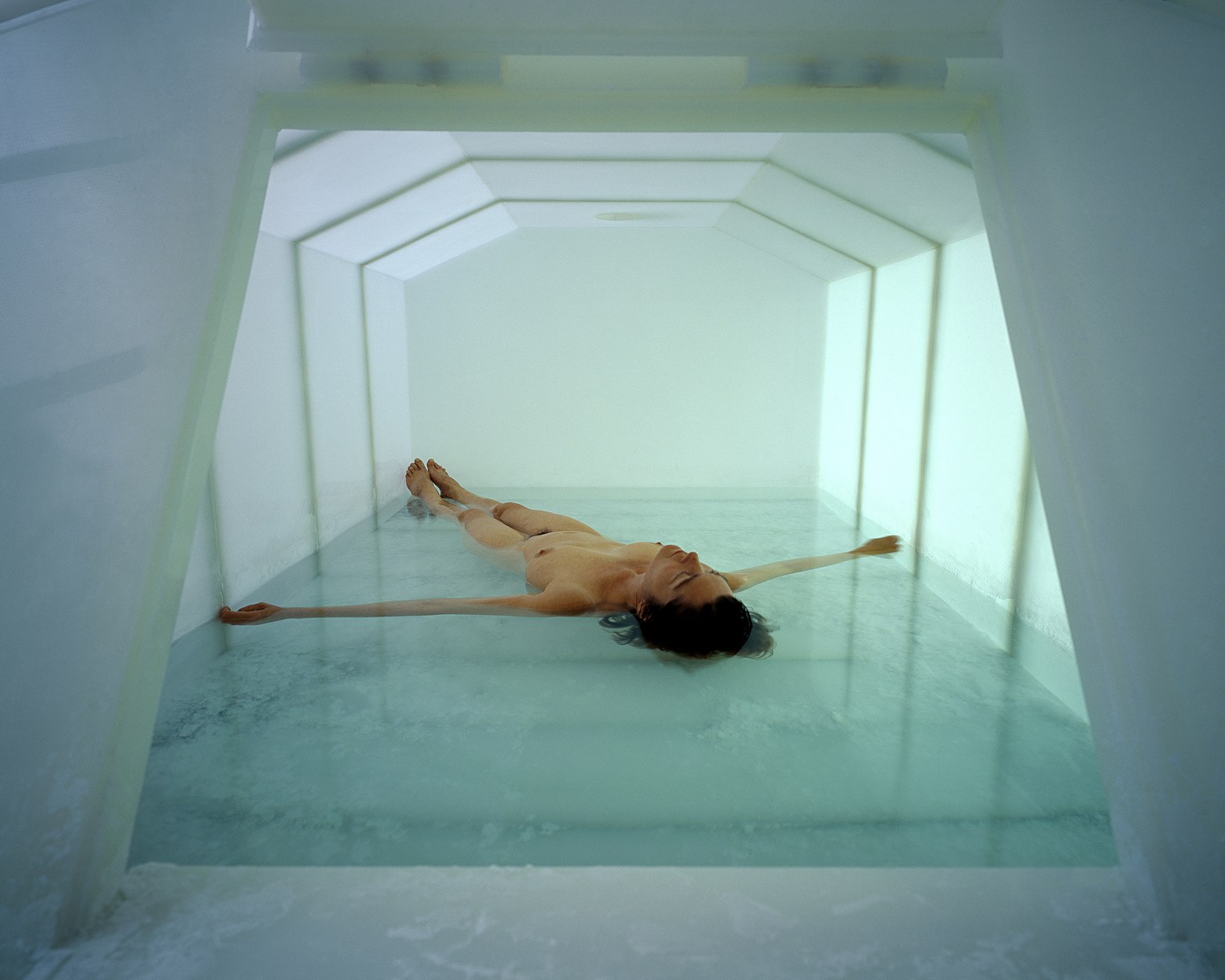
From Vogue Magazine
Sensory-deprivation tanks, once popular with stoners, scientific geniuses, and the sorts of people who prefer to polish their own chakra crystals, are reentering our culture in more mainstream therapeutic forms. It is possible now to go lie in one after lunch, much as you might visit a spa—except that tanks, unlike spas, are intended not only to help the body but to serve the mind. A REST tank is filled with about ten inches of water, into which a thousand pounds of Epsom salts have been dissolved. This solution, nearly saturated, is so buoyant that one can’t notfloat in it, even with effort. And the water is exactly at body temperature, obscuring the normal sensation of having discrete limbs in space; the floater’s ears sink just below the water line, leaving only two senses—smell and taste—untouched. Most people have not spent time without sight, sound, and feeling since leaving the womb. A good part of the intrigue of floatation tanks surrounds the question of the brain’s response in such bizarre conditions.



